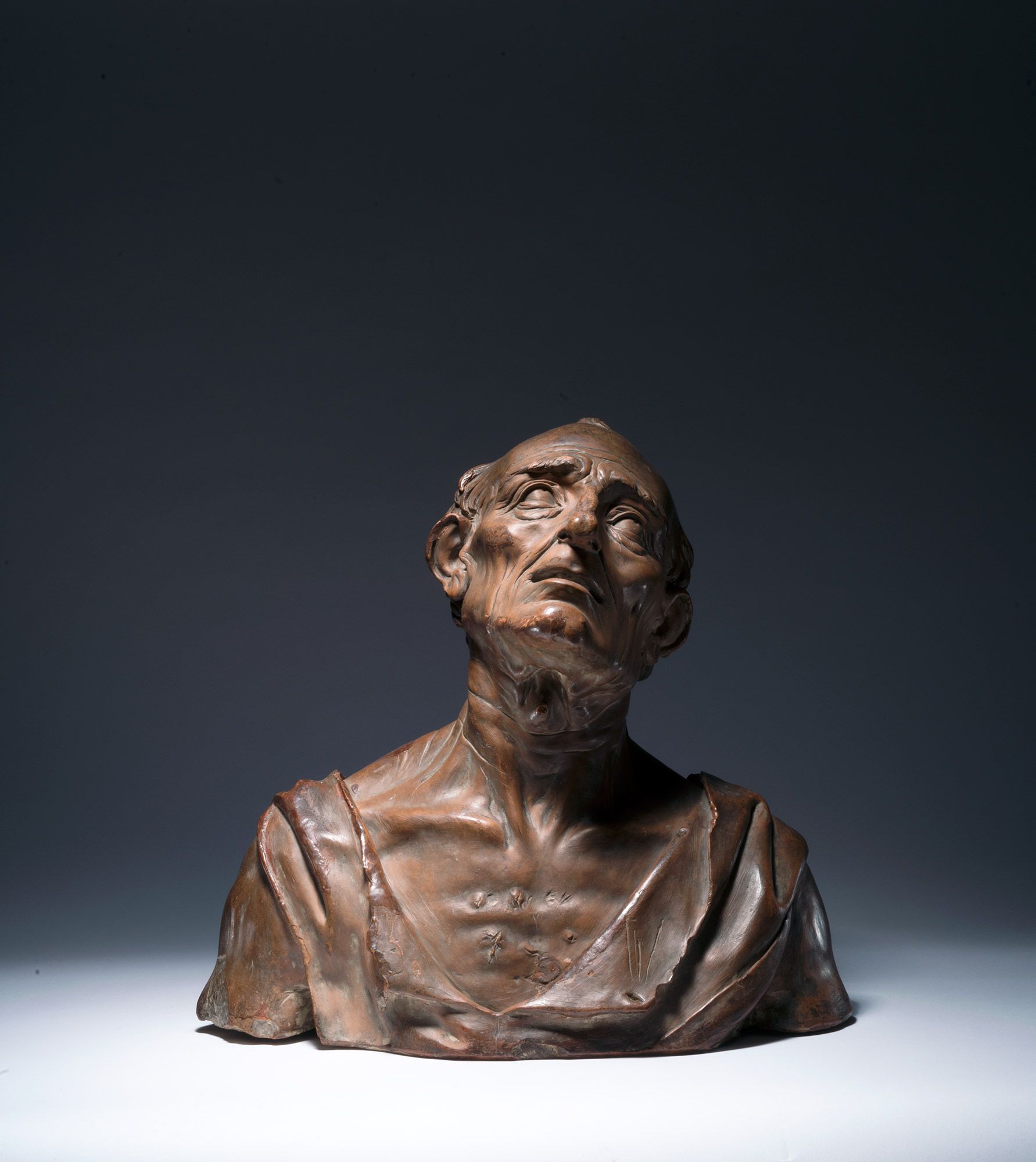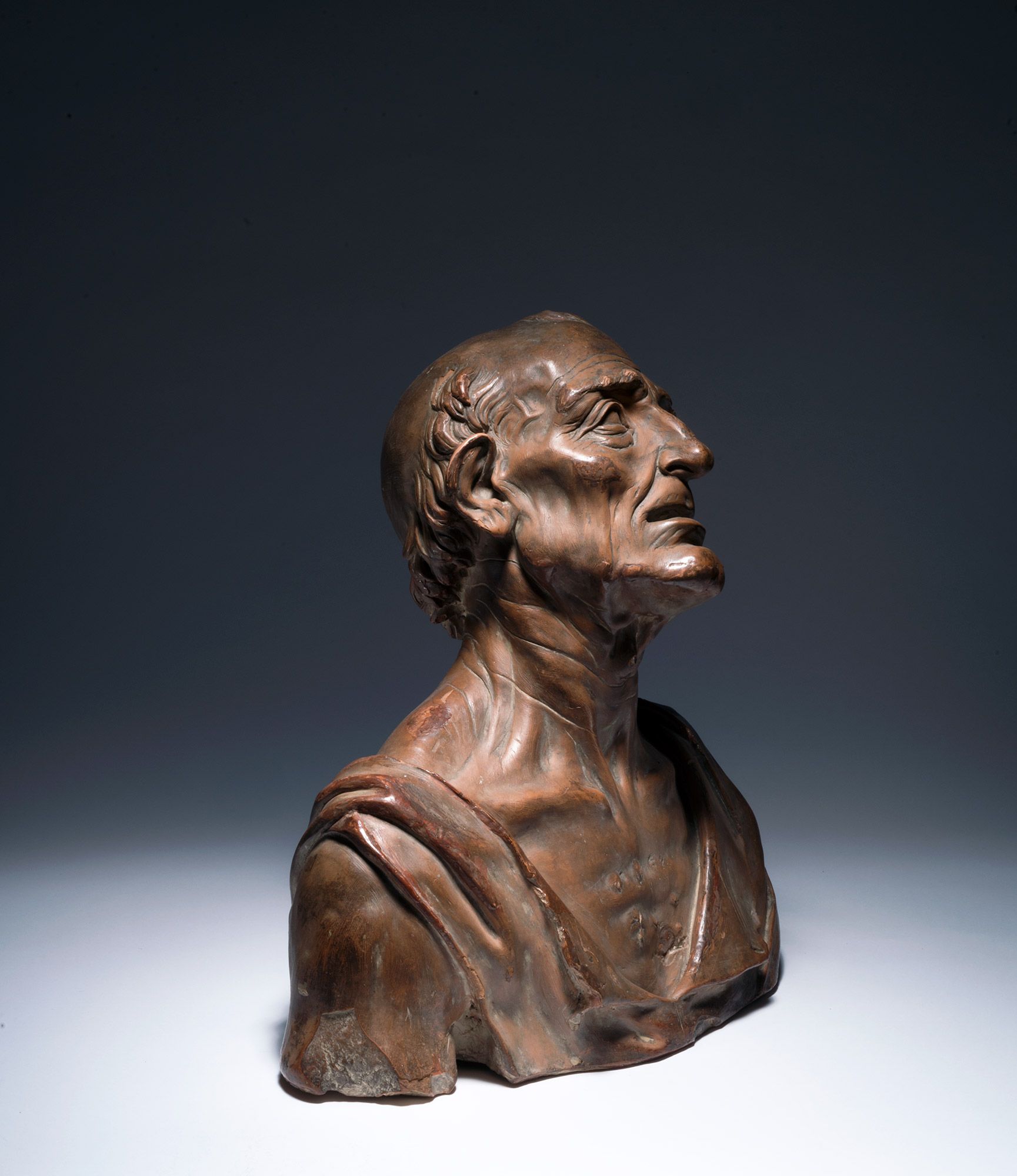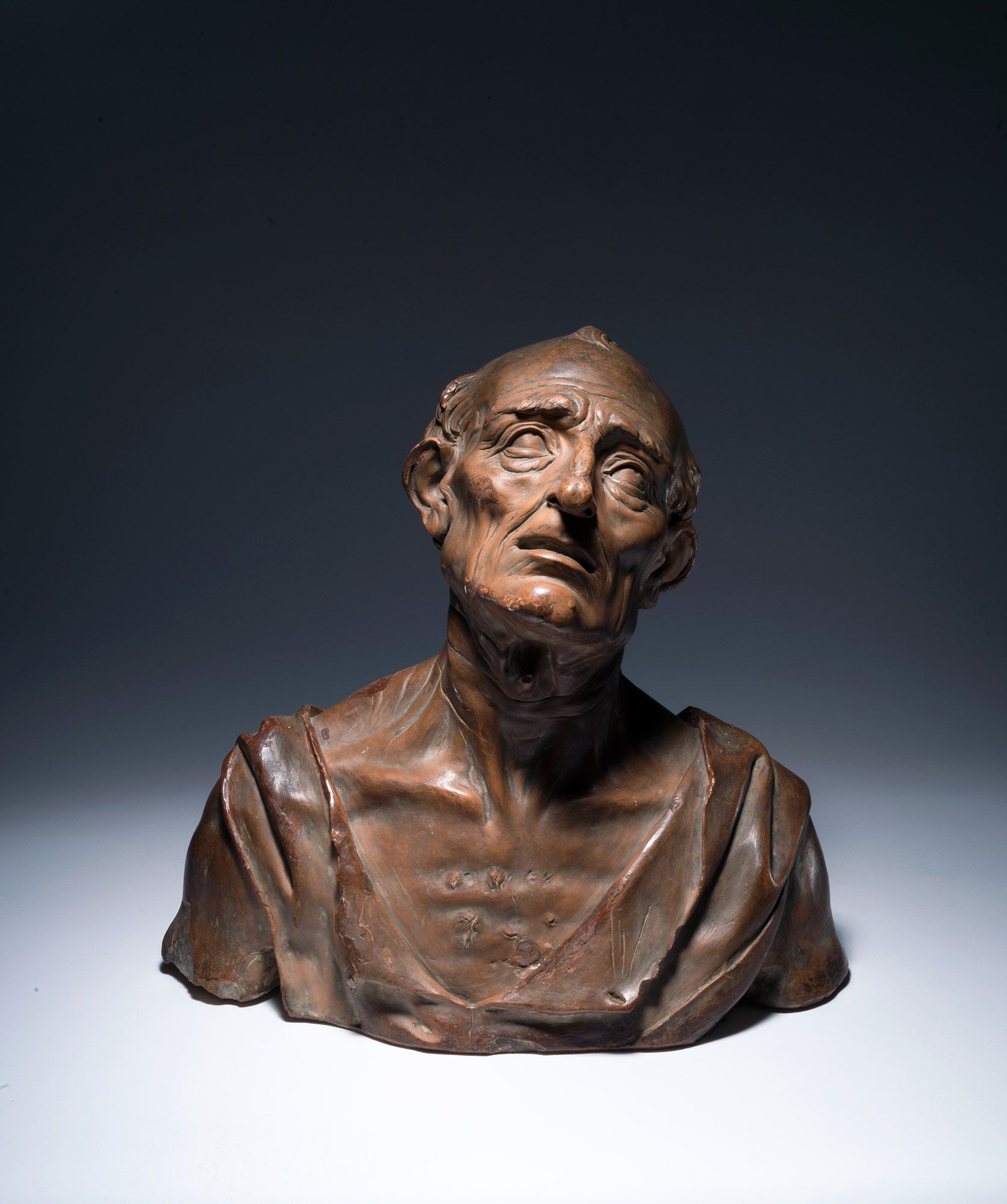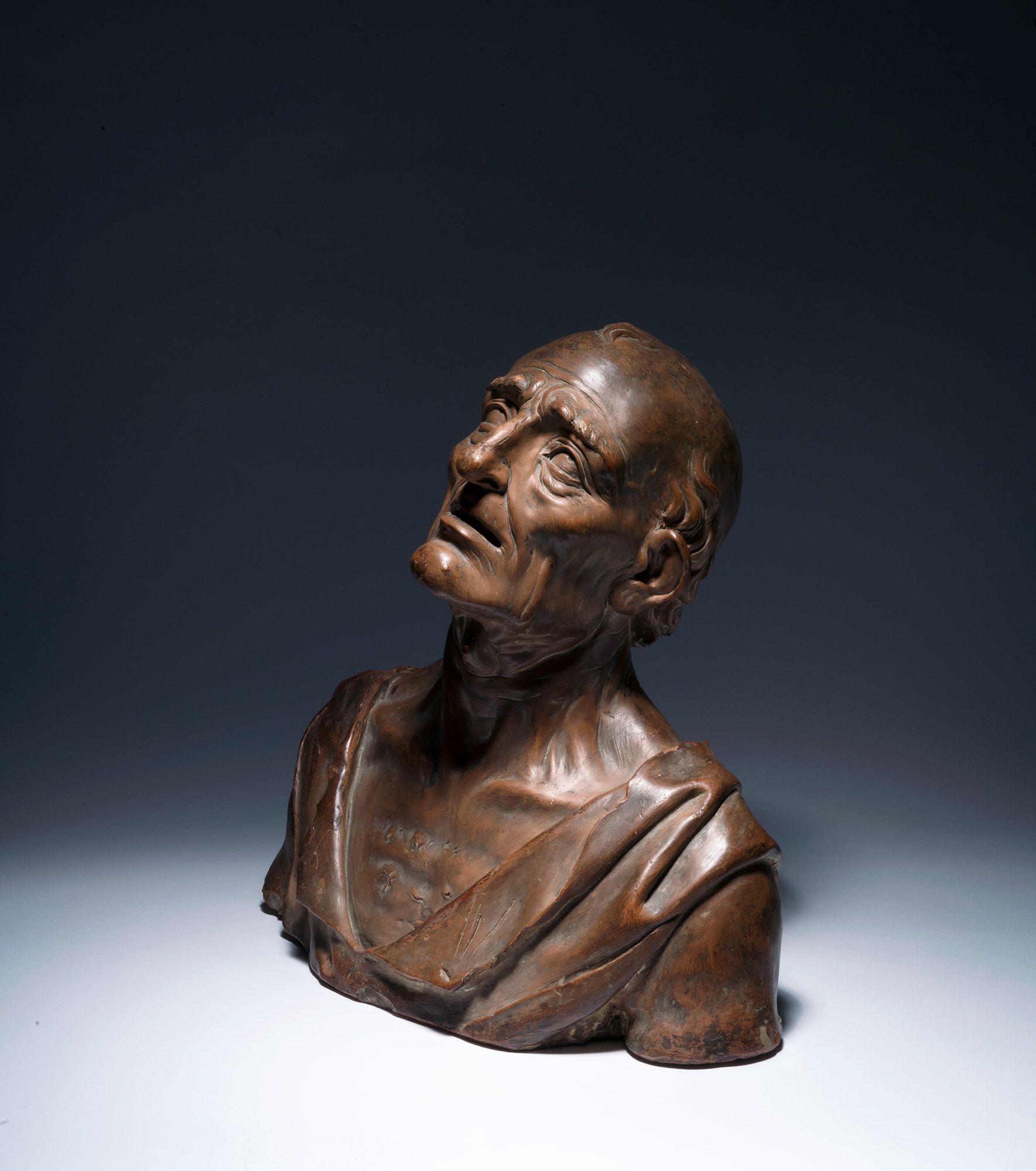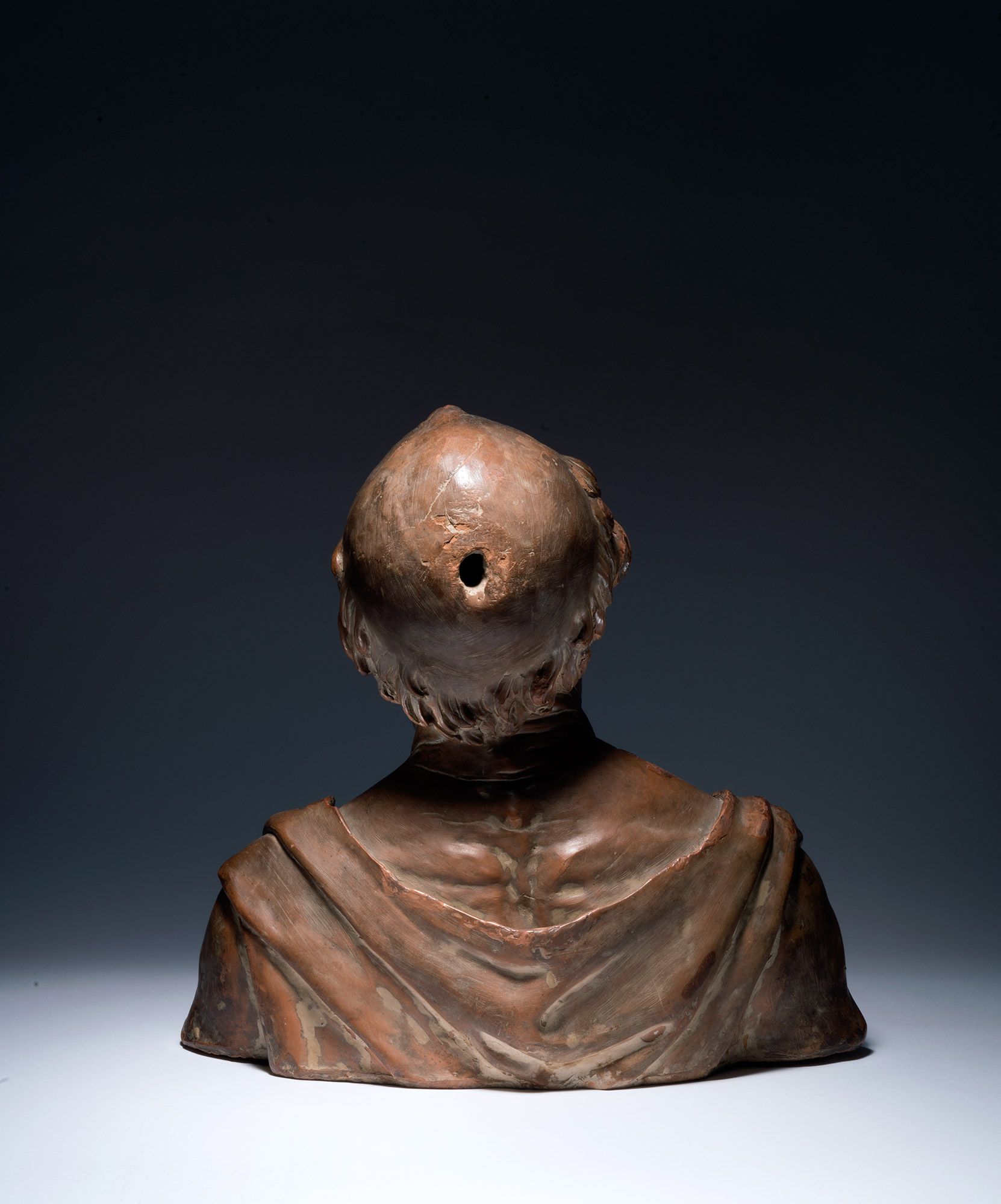FJK 132
Verrochio Andrea, del (Italian, Florence 1435–1488, Venice)
Bust of Saint Jerome
Late 15th century
14 61/64 × 15 3/4 × 7 7/8 in. (380 × 400 × 200 mm)
Medium
Terracotta
Origin
Private Collection
Sale, Christie’s, London, December 11, 1984, no. 17
Jan Krugier Collection, Monaco, JK 3997
Jan Krugier Foundation
Bibliography
POPE-HENNESSY James, Catalogue of the Italian Sculpture in the Victoria and Albert Museum, 1964, nos. 420-422, pl. 417-419.
PASSAVANT Günther, Verrocchio, London: Phaidon, 1969, p. 188, pl.75-77.
SEYMOUR Charles, The Sculpture of Verrocchio, London, 1971, pp. 64, 181.
SERRES R., The Verrochio Workshop. Techniques, Production and influences, 1999, App. A.26 (ca. 1460?).
Exhibitions
Paris, Musée Jacquemart-André, La Passion du dessin. Collection Jan et Marie-Anne Krugier-Poniatowski, 2002, p. 372, no. 173, color ill. p. 373.
Munich, Kunsthalle der Hypo-Kulturstiftung, Das Ewige Auge - Von Rembrandt bis Picasso. Meisterwerke aus der Sammlung Jan Krugier und Marie-Anne Krugier-Poniatowski, 2007, p. 36, no. 10, color ill. p. 37.
Notes
The [Jan Krugier Foundation] Bust of St. Jerome depicts the old saint’s head, chest and shoulders in the pious expression that follows the tradition of depicting him as an ascetic living in the solitude of wilderness in contemplation of the spiritual duties. His physiognomy, with deep-set eyes, sunken cheeks and protruding jaw, is robust and anatomically emphatic. The morphology of his face and neck borders on caricature, but maintains such a high degree of anatomical accuracy as to lend it realism enough for believability. His upturned face and eyes, open mouth, and exposed chest reveal the damage caused by the stone he uses to beat himself into ecstasy and reflects an expression of pious devotion to the church.
The results of a 1984 thermoluminescence test demonstrating its Renaissance origin, and its close resemblance to works from the studios of Verrocchio, Leonardo and Rustici, as well as a late Quattrocento Florentine drawing that appears to be based on such a model, place it firmly as a work that was known in the last quarter of the Quattrocento. This work should be considered of great significance for its own merit and for its use as a studio model. Despite these characteristics and qualities the [Jan Krugier Foundation] Bust of St. Jerome has been almost completely ignored in the Renaissance scholarship.
The physiognomical type, the morphological characteristics and stylistic qualities of the [Jan Krugier Foundation] Bust of St. Jerome point directly to Verrocchio as its creator. It could in fact be the bust by Verrocchio mentioned by Giorgio Vasaris as: “… una testa di S. Girolamo che è tenuta maravigliosa”. the [Jan Krugier Foundation] Bust is closely related in form and style, particularly in the cutting of the winkles in the skin and the placement of the flesh on the protruding skull, to the head of Goliath in Verrocchio’s David with the Head of Goliath in the Bargello, Florence (inv. 450). On the other hand, it is at once not naturalistic enough to be considered the work of Leonardo, while on the other hand it is not distinguished by the more caricaturized style of Rustici.
Verrocchio must have created the terracotta [Fondation Jan Krugier] Bust of St Jerome in the spirit of an expressively heightened physiognomy to create a particularly pious expression in his older subject as a studio model for use in producing preparatory drawings for paintings of the subject. He was also here interested in resolving the anatomical problems of the articulation of the neck and shoulders, which previously had not been satisfactorily worked out by any Renaissance artist, and which later became a topic of great interest to Leonardo da Vinci, who made it the focus of his 1481 painting depicting, St. Jerome in Penitence in the Vatican, Rome
Richard D. Serros, La Passion du Dessin, Paris, Musée Jacquemart-André, 2002, p. 372 (translated from French)
Request for information/loan
The Jan Krugier Foundation is devoted to increasing the impact of the collection of drawings through regular loans to major exhibitions. Loan applications should include a complete presentation of the project.

